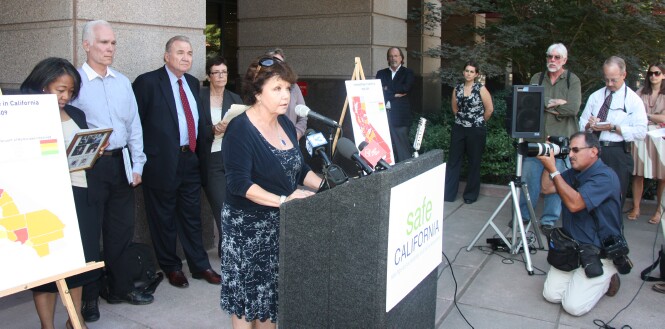
Yesterday in Sacramento, a group of former law enforcement officials and other anti-death penalty activists came together to announce that they had turned in a ballot initiative for the 2012 general elections to replace California’s death penalty with life in prison with no possibility of parole.
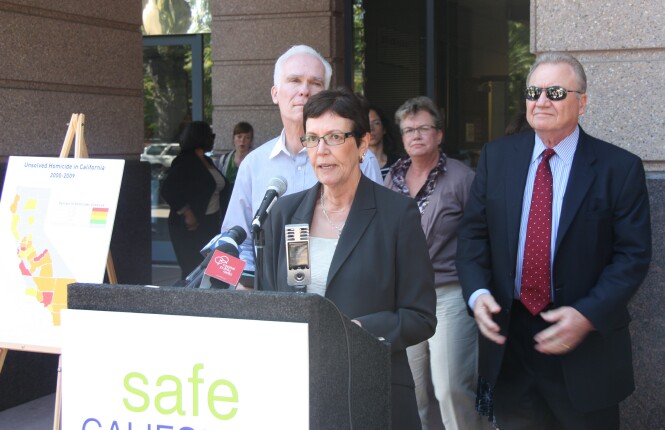 “The death penalty system in California is broken and there is growing support for this change including from law enforcement,” said Jeanne Woodford, former Warden of San Quentin State Prison who oversaw four executions during her tenure. “Over a hundred current and former law enforcement officials, prosecutors, judges and corrections officers have already signed in support of replacing the death penalty with an effective alternative.”
“The death penalty system in California is broken and there is growing support for this change including from law enforcement,” said Jeanne Woodford, former Warden of San Quentin State Prison who oversaw four executions during her tenure. “Over a hundred current and former law enforcement officials, prosecutors, judges and corrections officers have already signed in support of replacing the death penalty with an effective alternative.”
In a joint statement currently signed by over 104 law enforcement officials, they conclude “that the death penalty in California is not working.”
They cite annual costs of at least $137 million per year in California, as a basis for arguing “the death penalty is extremely expensive and diverts too many crime-fighting resources from other critical public safety needs.”
Furthermore, they cite the risk of wrong convictions and executions that cannot be eliminated entirely.
They further argue, “The system fails victims’ families, who are dragged through years of appeals and uncertainty.”
Because of the delays, they believe the death penalty is “no more a deterrent to murder than permanent imprisonment.”
Finally, “The vast majority of death row prisoners in California will meet the same fate as those sentenced to permanent imprisonment; they will die in prison despite the extraordinary additional expenses incurred by the taxpayers of California.”
The effort on Monday was led, in addition to Ms. Woodford, by former Los Angeles County District Attorney Gil Garcetti (1992-2000), who had once sought the death penalty in dozens of murder cases, and Donald Heller, who authored the Briggs Initiative, the 1978 ballot measure that expanded the kinds of murders eligible for capital punishment.
“It is time to replace California’s dysfunctional and horribly costly death penalty,” Mr. Garcetti said.
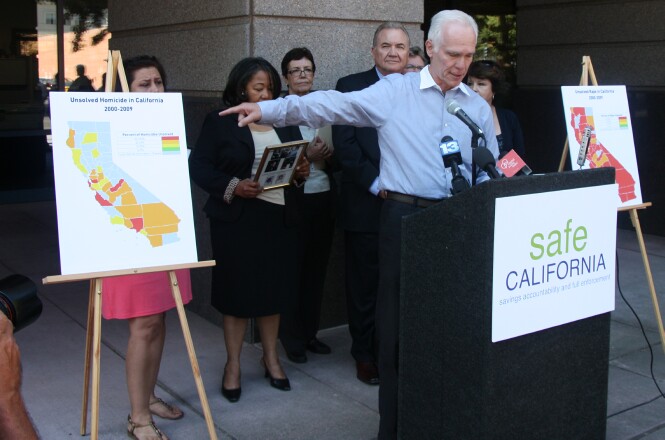
He called the death penalty in California, “broken and unfixable” citing the millions of dollars the decision by a district attorney to seek the death penalty costs the taxpayers, over what it would cost to simply seek life without parole.
“The DA knows too, that even if sentenced to death, the grieving family of the murdered victim will probably never ever see closure with an execution,” he continued. It is more likely that the murderer will die in prison than be executed, nevertheless for years to come the families and close friends of the victim “will be tormented knowing that the murderer grows older but that murderer is seemingly no closer to execution. We should put a stop to that torment.”
“How many of our citizens know that California has an unsolved murder rate of 46% and an unsolved rape rate of 56%?” he asked. Why, he said, because law enforcement agencies lack the resources to solve those crimes. He believes that the SAFE California Act will free up money that was going to fruitless death penalty cases and could be used to help solve unsolved crimes.
The SAFE California Act takes $30 million of the dollars saved per year, for three years, and puts it into a special fund that will be used to solve more murder and rape cases.
Don Heller said, “I wrote the death penalty initiative for Senator Briggs in 1977, it was passed in November 1978. It’s a well-drafted document, except, it doesn’t work. It’s flawed because the process has become so incredibly expensive that it cannot be 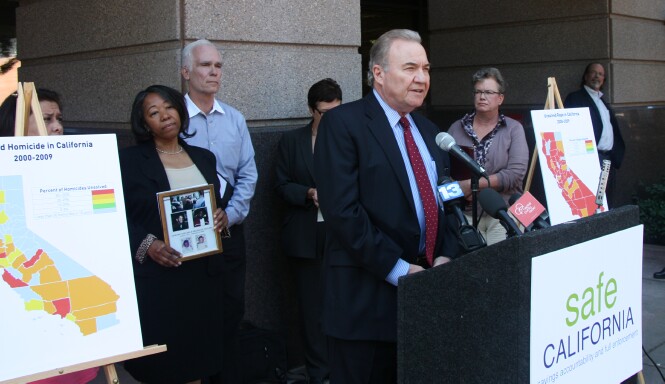 remedied by any legitimate means.”
remedied by any legitimate means.”
He said it will continue to drain much-needed resources for law enforcement and the protection of society.
“I wrote it in 1977, at the time it was written no one considered the impact of capital punishment,” Mr. Heller continued. “No one ever thought about the number of people that would end up being convicted under the initiative.”
We currently have over 700 people on death row, Mr. Heller said, and it takes 20 to 25 years to execute them, with a number of cases getting reversed.
However, not everyone agrees that ending the death penalty is necessary in order to save money.
Kent Scheidegger, who is the director for the Crime Justice Legal Foundation in Sacramento, argued that those pushing for abolition are the ones who have created the high cost of death penalty cases in the first place.
“The death penalty doesn’t need to cost anywhere as much as it does,” he said in a statement. “The only reason it does is that the very same people who are complaining about costs have succeeded in killing every reform we have.”
Victim’s advocacy groups contend that appeals reform could cut years off of the average time it takes from sentencing to execution.
However, death penalty reformers such as Jeanne Woodford argue otherwise. They argue that the appeals process is necessary to prevent wrongful executions.
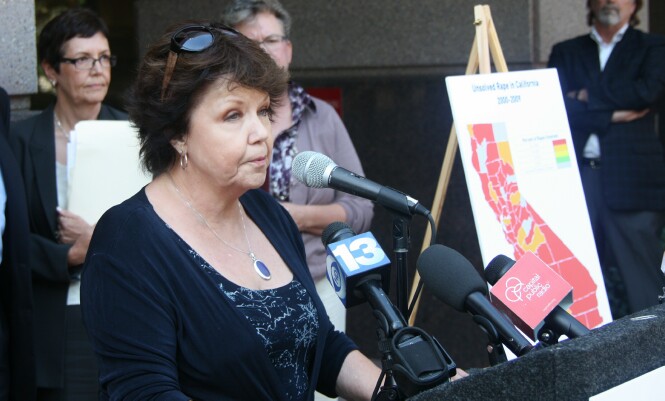 Gloria Killian was released from prison in 2002 after serving more than 16 years of a 32- to life sentence for a crime that she did not commit.
Gloria Killian was released from prison in 2002 after serving more than 16 years of a 32- to life sentence for a crime that she did not commit.
She described that she was arrested for a crime, and held for about four months before charges were dropped. However, one of the actual perpetrators of the crime was tried and sentenced to life without parole.
“He was horrified by that sentence,” Ms. Killian said, “He went back to the jail, picked up the phone, called the Sheriff’s Department and said, ‘I can help you.'”
They recalled his sentence and he was given three and half years in exchange for his testimony against Ms. Killian.
The prosecutor attempted to sentence her to the death penalty, “If it hadn’t been for a law a year later, I would have been sentenced to death,” she said.
“The issue is that there are so many people like me,” she said. “The fact is that when I was able to get the evidence and to get good lawyers, I was alive to be exonerated.”
Steve Smith, campaign consultant, cited the David Binder Research Poll from this spring, which tested this precise proposal and found that 54% of likely voters would support such an initiative.
Mr. Smith also believes that they have enough monetary support to both put the initiative on the ballot and to wage a competitive campaign to pass the initiative.
The act as written does not simply replace the death penalty with life imprisonment without the possibility of parole.
It also adds a requirement that all persons convicted of murder shall be required to work in a high security prison and money earned would be used to help victims through a victim’s compensation fund.
The money saved by this initiative will not go back into the general fund, but rather into a special fund designated for law enforcement.
“We’re very concerned about the number of police officers that have been taken off our streets in California because of the budget crisis,” Jeanne Woodford responded to questions from reporters. “We have also listened to the voices of victims. Unsolved homicides and unsolved rapes are clearly a horrific issue and a huge concern to the victims. So we felt it was necessary to direct money to address those issues.”
Gil Garcetti added that there is no law enforcement agency in the State of California that has not suffered cutbacks.
He said, “Those cutbacks affect everything. That means fewer murder investigations, fewer rape investigations. The resources are not there that are necessary to be there.”
He thinks the budget situation will improve in three or four years, but he wants there to be a bridge to help funding for investigations for open murder and rape cases.
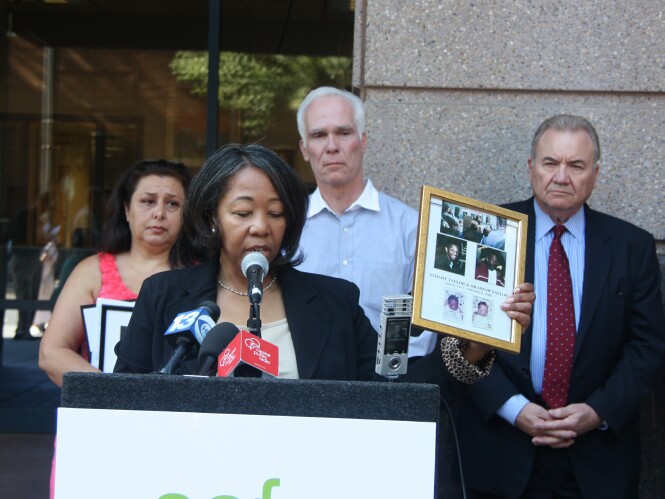
The fact remains that since the death penalty was reinstated in 1978, only 13 inmates have been executed and none since Clarence Ray Allen in January 2006.
“Thirty-three years ago I made a mistake. Now we have the opportunity to fix that mistake and improve public safety,” said Don Heller.
The initiative was submitted to the Attorney General for title and summary on Friday. Supporters believe that they will need around $1.5 million to gather the more than 500,000 valid signatures needed to get the measure on the ballot.
—David M. Greenwald reporting





[quote]The SAFE California Act takes $30 million of the dollars saved per year, for three years, and puts it into a special fund that will be used to solve more murder and rape cases.[/quote]
This sounds good…
Said Don Heller
[quote]“Thirty-three years ago I made a mistake. Now we have the opportunity to fix that mistake and improve public safety…”[/quote]
One may wonder why it took Heller 33 years to so admit?
How many mistakes should Heller be entitled?
Just sayin…
It takes a big person to admit a mistake of that magnitude.
MW:[quote]It takes a big person to admit a mistake of that magnitude.
[/quote]
And a bigger person to do so in a timely manner, no?
AR
I would say that whenever the person recognizes the error is the right time.
MW and as indicated I would add the timing element
AR
And what would you define as timely? To paraphrase MLK “it is always the right time to do the right thing.”
MW and the the good doctor would also say today is the day…
Excellent coverage (story and comments). It’s time to get rid of this inhumane practice that cannot help but kill innocent people on behalf of all of us.